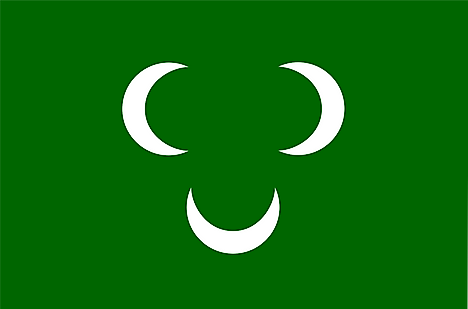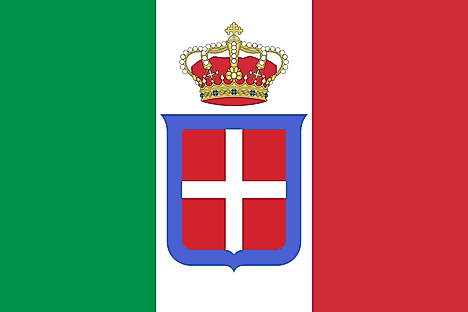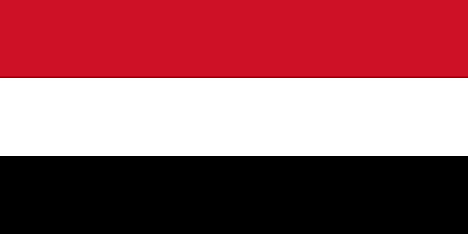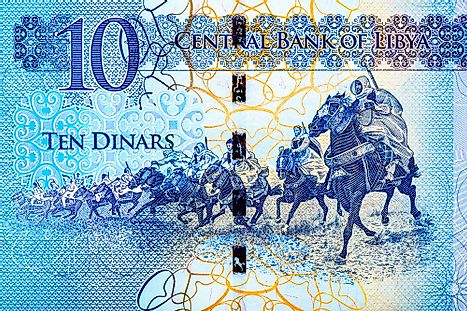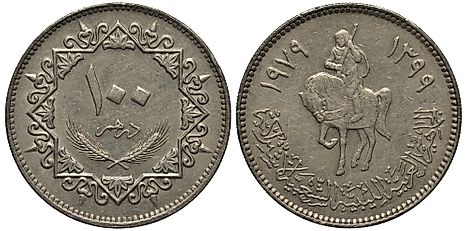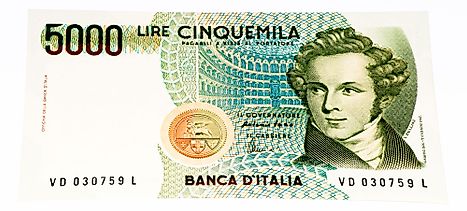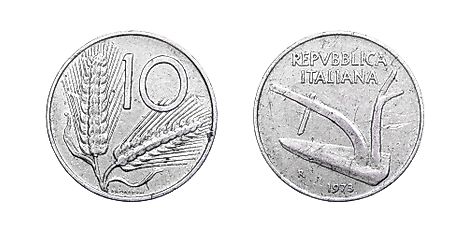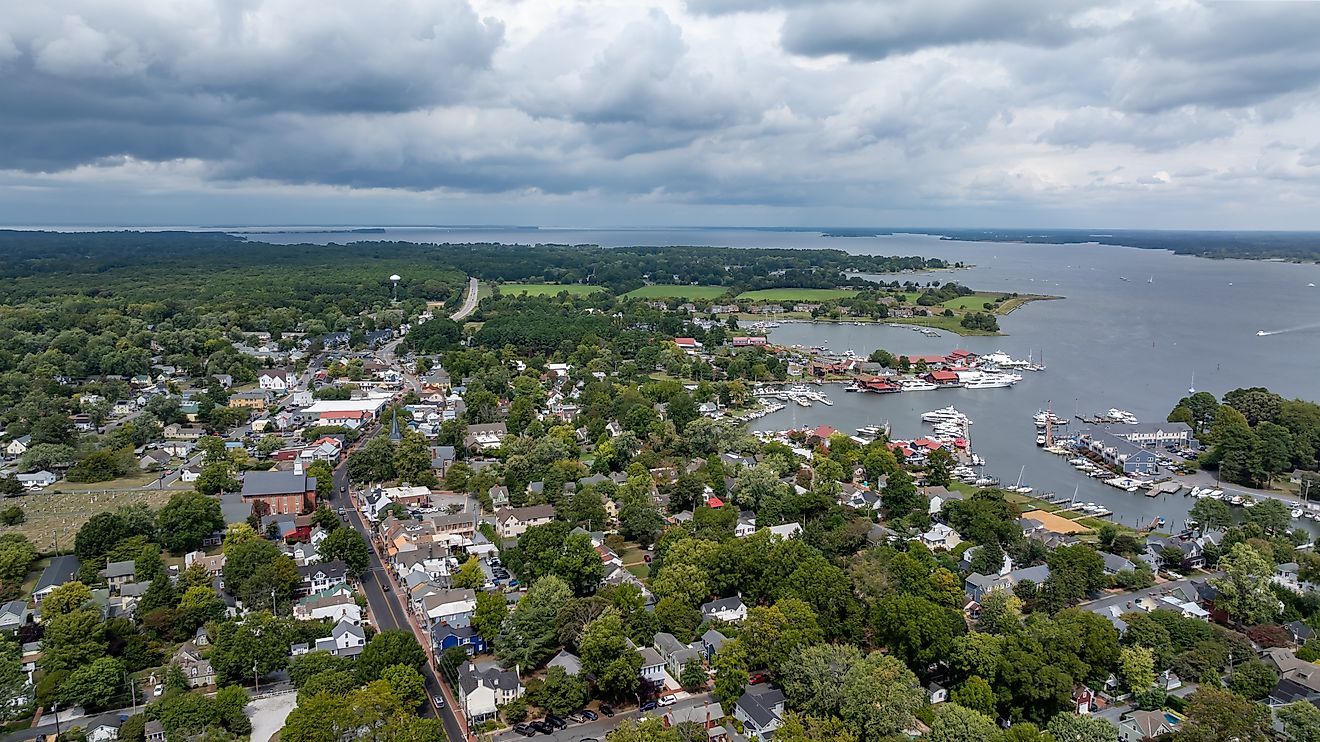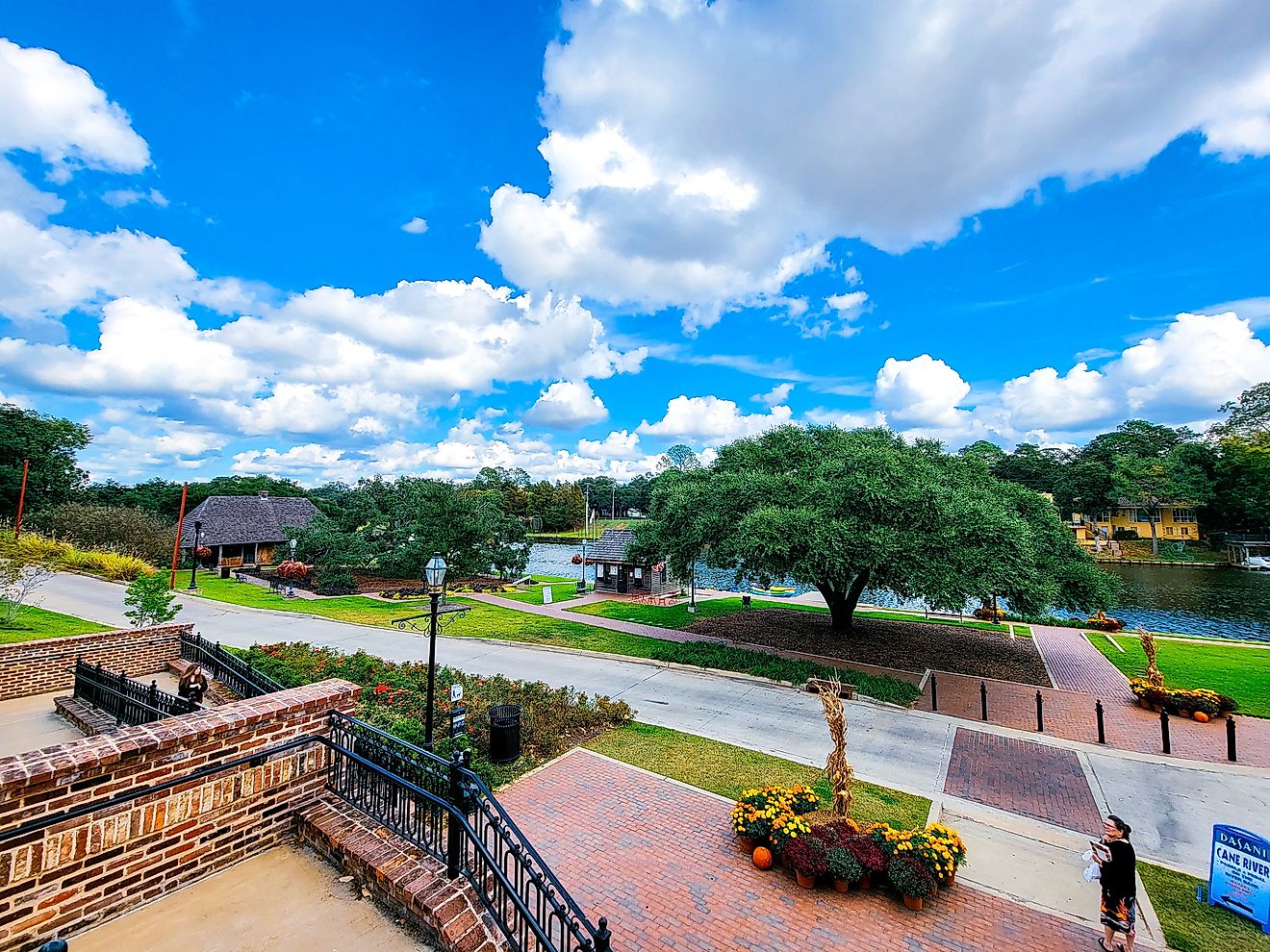Flags, Symbols, & Currencies of Libya
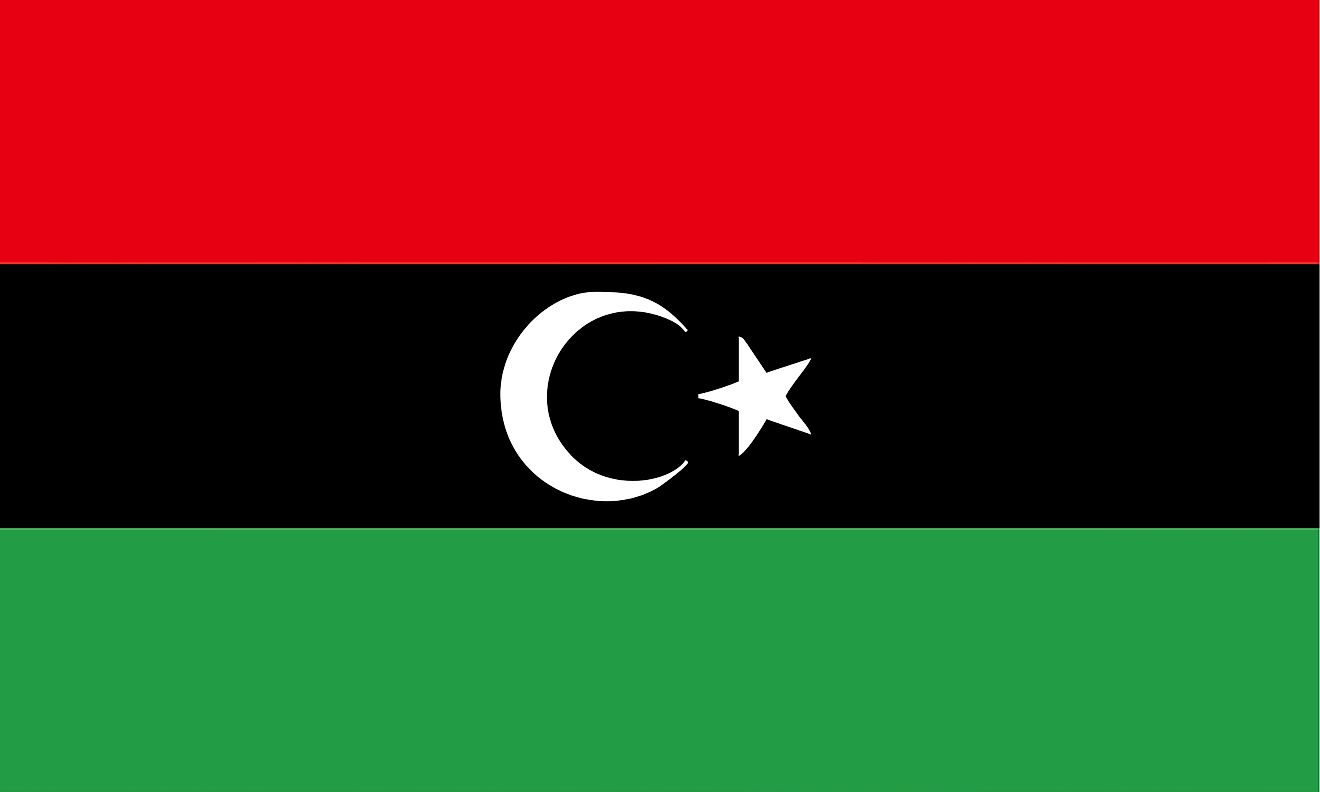
The flag of Libya is the flag used by the National Transitional Council and the anti-Gaddafi forces. It was defined as the country's national flag in the Libyan interim Constitutional Declaration issued on August 3, 2011, as a result of the Fall of Tripoli from the Gaddafi regime in the Libyan Civil War in August 2011. The current flag is identical to the flag of the Kingdom of Libya introduced in 1951. The green flag introduced in 1977 by Gaddafi's Libyan Arab Jamahiriya remains in use by Gaddafi loyalists.
The flag of Libya is a horizontal triband comprising three colors with red at the top, black in the middle, and green at the bottom. There is a 5-pointed star and a crescent in white color centered on the black stripe. The black stripe is double the size of green and red. The dimensions of the flag are in the proportion of 1:2.
Symbolism of the Flag of Libya
The different colors in the Libyan flag represent the different regions of the country. The red color represents the Fezzan region, the black represents Cyrenaica, while the green color represents the Tripolitania region. The crescent stands for the Islam which is the predominant religion in the country. The crescent also represents the lunar month in the Islamic calendar, which, according to Islam is a reminder of the epic journey of hijra of Prophet Muhammad. The star is a symbol of the smiling hope of the people of Libya, the object, the light and the beauty in their trust in God, and honor that illuminates the way and ends the darkness.
History of the Flag of Libya
Between 1911 and 1942, Libya was under the colonial rule of Italy and during this time there was no flag in the country. However, when the country was under the administration of the British and the French, the Union Jack and the French Tricolor flags were widely used. In 1951, the regions of Cyrenaica, Tripolitania, and Fezzan came together to form the Libyan kingdom or the United Kingdom of Libya. Sir Omar F. Shennib designed the first flag for the kingdom in 1951 which represented the three regions of Tripolitania, Fezzan, and Cyrenaica. In 1969, the use of the flag was dropped following the coup and was consequently adopted again in 2011.
Immediately after the coup in 1969, the country replaced its flag with a flag that closely resembled the Arab Liberation Flag with red, white, and black colors. The flag had been used un-officially in Egypt and influenced the current flag of Egypt.Libya joined the Federation of Arab Republics in 1972, which was an attempt to unite Libya, Syria, and Egypt to form a United Arab Nation and consequently, the flag at the time was adopted to link the country to Syria and Egypt. The flag had a golden scroll and the federation name in Arabic. The federation lasted until 1977.
In 1977, the country changed its name again to Socialist People’s Libyan Arab Jamahiriya, and a new flag was adopted. Muammar Gaddafi, the former Prime Minister and the then Secretary General of the General People's Congress devised the name Jamahiriya meaning "the state of the masses". The green flag was the world’s only flag with a single green color, having no other details like a symbol or any other design. Colonel Gaddafi selected the flag to represent his philosophical ideology and thinking. The color stood for the Islam religion and the Third Universal Theory style of government as outlined by Gaddafi’s Green Book.
In 2011, after Gaddafi was ousted, the earlier flag that was in use between 1951 and 1969 was re-adopted by the National Transition Council, and France became the first nation to recognize the new government and became the first country as well to allow an employee in the Embassy of Libya raise the flag.
Symbols of Libya
National Coat of Arms of Libya
Currently, Libya does not have an official coat of arms.
National Anthem
- Anthem Title: Libya, Libya, Libya
- Music composer: Mohammed Abdel Wahab
- Lyricist: Al Bashir Al Arebi
- Date of Adoption: 1951
Libya, Libya, Libya is the national anthem of Libya. It is unofficially known as "Ya Beladi" ("O my country!") and was adopted as the country's official anthem in 1951. The anthem was written by Al Bashir Al Arebi and composed by Mohammed Abdel Wahab in 1951. Originally, Libya, Libya, Libya was the national anthem of the Kingdom of Libya from independence in 1951 to 1969. When Muamar Gaddafi overthre King Idris I in 1969, the country adopted "Allahu Akbar," Egyptian military marching song as the national anthem. Libya, Libya, Libya was readopted as the national anthem in 2011 after the death of Gaddafi.
Libya, Libya, Libya
Chorus
Yā biladī yā biladī
Bijihādī wajiladī
Idfa'ī kaydal a'adi wa-l'awadi
Wāslamī islamī islamī
Islamī ṭūla-lmada
Innanā naḥnu-lfidā
Lībiyā Lībiyā Lībiyā
Yā biladī anti Mīrāthu-ljudūd
La ra'Allahu yadān tamtaddu lak
Fāslamī innā 'aladdahri junūd
La nubālī in salimti man halak
Wakhudī minnā wathīqāti-l'uhūd
Innanā yā lībiyā lan nakhdilak
Lan na'ud lil quyud
Qadd taḥarrarnā waḥarrarnā-lwaṭan
Lībiyā Lībiyā Lībiyā
Chorus:
Jurrudal-ajdādu ‘azmān murhafā
Yawma nādāhum munādi-lilkifāḥ
Thumma sārū yaḥmilūna-lmuṣḥafā
Bīlyadi-l.ūlā wabī-l.ukhrā-ssilaḥ
Fa.iðā fī-l'kawni dīnun waṣafā
Wa.iðā-l‘ālamu khayrun waṣalaḥ
Fālkhulūd … liljudūd
Innahum qad sharrafū haðā-lwaṭan
Lībiyā Lībiyā Lībiyā
Chorus:
Huyya idrīsu salilu-lfātihīn
Innahu fī Lībiyā ramzu-ljihād
Ḥamala-lrāyata fīnā bīlyamīn
Wataba'anāhu litaḥrīri-lbilād
Fānthanā bīlmulki walfatḥi-lmubīn
Warakaznā fawqa hāmāti-lnijād
Rāyatan hurratan
Ẓallalat bīl'azi arjā al-waṭan
Lībiyā Lībiyā Lībiyā
Chorus:
Huyya al-mukhtar amir-lfātihīn
Innahu fī Lībiyā ramzu-ljihād
Ḥamala-lrāyata fīnā bīlyamīn
Wataba'anāhu litaḥrīri-lbilād
Fānthanā bīljudd walfatḥi-lmubīn
Warakaznā fawqa hāmāti-lnijād
Rāyatan hurratan
Ẓallalat bīl'azi arjā al-waṭan
Lībiyā Lībiyā Lībiyā
Chorus:
Yā bna Lībiyā yā bna āsāda-ššarā
Innanā lilmajdi walmajdu lanā
Muð sarawnā ḥamida-lqawmu-ssurā
Bārkallahu lanā istaqlalanā
Fābtaġū-l'alyā ashā.wan fī-lwarā
Wāsta'iddū lilwaġā ashbālanā
Lil ġilab ... yā šabāb
innamā-ddunyā kifāḥu lilwaṭan
Lībiyā Lībiyā Lībiyā
Libya, Libya, Libya
Chorus:
O my country,
O my country,
With my struggle and gladiatorial patience,
Drive off all enemies' plots and mishaps
Be saved, be saved, be saved, be saved all the way
We are your sacrifices
Libya, Libya, Libya!
O my country, You're the heritage of my ancestors
May Allah not bless any hand that tries to harm you
Be saved, we are for ever your soldiers
No matter the death toll if you've been saved
Take from us the most credential oaths, we won't let you
down, Libya
We will never be enchained again
We are free and have freed our homeland
Libya, Libya, Libya!
Chorus
Our grandfathers stripped a fine determination when
the call for struggle was made
They marched carrying Qur'an in one hand,
and their weapons by the other hand
The universe is then full of faith and purity
The world is then a place of goodness and godliness
Eternity is for our grandfathers
They have honoured this homeland
Libya, Libya, Libya!
Chorus
(verse abolished)
Extend on Idris the honour, the descendant of the
conqueror
He is the symbol of struggle and Jihad
He raises our flag high
And we follow him, freeing our homeland,
He allows praise of his throne
And raises hope for Libya in heaven,
A free flagOver a rich country,
Libya, Libya, Libya.
Chorus
(new version)
Extend on Al Mukhtar the prince of the conqueror
He is the symbol of struggle and Jihad
He raises our flag high
And we follow him, freeing our homeland,
He allows praise of his ancestors
And raises hope for Libya in heaven,
A free flag
Over a rich country,
Libya, Libya, Libya.
Chorus
O son of Libya, O son of lions of the wild
We're for honour and the honours are for us
Since the time of us being honoured, people thanked our
generosity and honourableness
May Allah bless our Independence
O Libyans, seek the dizzy heights as a position in mankind
Our cubs, be prepared for the foreseen battles
Our youths, to prevail
Life is only a struggle for homeland
Libya, Libya, Libya!
Chorus
The Currency of Libya is the Libyan Dinar
The official currency of Libya is the Libyan dinar, adopted in 1971 as a replacement of the Libyan pound. The replacement followed a coup in which Libya’s authoritarian ruler, Muammar Gaddafi, overthrew King Idris. The dinar was issued at an equal value to the Libyan pound. One Libyan dinar is made up of 1,000 dirham. Libya’s Central Bank is responsible for producing, issuing, and regulating the dinar.
Banknotes and coins
Banknotes issued after 1971 bore Muammar Gaddafi’s portrait on them. The dinar is still the legal tender in Libya. In recent releases, the Arabic writings on the banknotes have been replaced with English text. The new notes have improved designs and additional security features that are aimed to minimize cases of fraud. The frequently used banknotes are in the denominations of 1, 5, 10, 20, 50 dinars.
Prior to 1975, the coins were denominated in milliemes. However, several coin denominations were introduced in 1975, including 1, 5, 10, 20, 50 and 100 dirhams. A second coin series were introduced in 1979 in the same denominations. The 1/4 and 1/2 dinar coins were introduced in 2001 and 2004 respectively. Today, the coins in circulation are in the denominations of 1, 5, 10, 20, 50 and 100 dirhams, 1/4 and 1/2 dinar coins.
Historical Currencies of Libya
Libya formed an important commercial region in the Sahara desert and attracted traders from Europe and Asia. Barter trade was the main method of trade in the region. The Arab Ottomans were the first to introduce formal currency in Libya, which was in the form of silver coins and was referred to as qirsh. In 1911, Italians seized control of Libya and made the nation their colony. The colonizers introduced the Italian lira as the official currency in Libya. The lira was used as the legal tender until Libya gained independence in 1951.
Libyans were excited to attain self-rule after many centuries of colonial rule. They immediately abandoned the Italian currency and established the Libyan pound. At the time of issue, the Libyan pound was of equal value to the sterling pound. The pound was subdivided into 100 piastres. The currency came in the form of coins and banknotes of varying denominations. The Libyan pound was in circulation for only two decades and was replaced shortly after the revolution in 1969.
